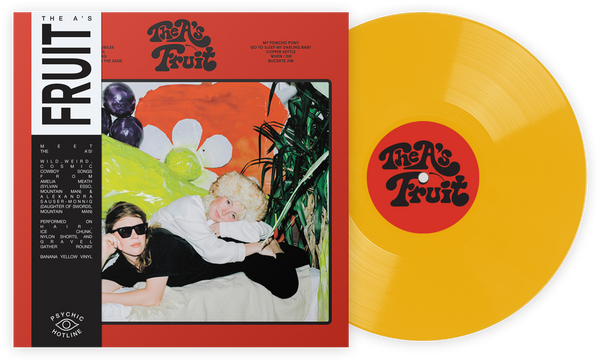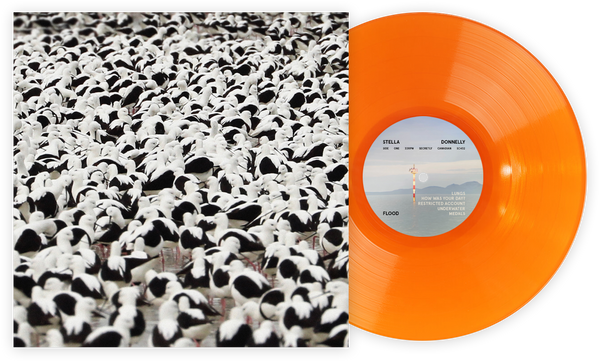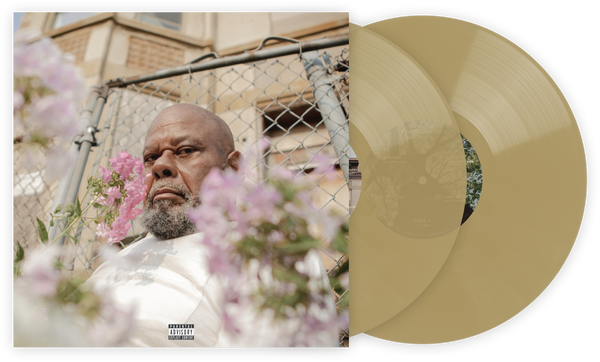在幻想文学的世界中,直到你写了一系列书籍之前,你都算不上什么人。最好是一部三部曲。虽然最近诺贝尔文学奖授予鲍勃·迪伦(Bob Dylan)在某种程度上(尽管有点争议)强调了文学与流行音乐之间的相似性,但在音乐中,同样的三部曲并不常见。尽管如此,它们确实存在,并且一旦出现,就会成为流行音乐中一些最伟大的连贯叙述作品。即使这三张专辑在主题上并没有明确联系,专辑三部曲依然成功地描绘了音乐人在录制时所经历的艺术时期的生动画面。
n三是幸运数字,因此让我们来庆祝十大最佳专辑三部曲,推荐您在黑胶唱片上拥有,包括鲍勃·迪伦和已故的大卫·鲍伊(David Bowie)等偶像的作品,以及现代嘻哈和电子音乐大师的唱片。

Bob Dylan: Bringing It All Back Home (1965), Highway 61 Revisited (1965) and Blonde On Blonde (1996)
Over a period of only 14 months, the former folk prodigy managed to change himself and the music world with his so-called electric trilogy, consisting of Bringing It All Back Home, Highway 61 Revisited and Blonde On Blonde. Released in 1965 and 1966, when Dylan was only 24 years old, the records caused a stir among the folk community, which feared it was losing its star to the rowdy world of rock ’n’ roll. In 1965, when two-thirds of Dylan’s electric trilogy had been released, the Minnesota native performed his first electric set at the Newport Folk Festival, which he had also played the two years prior. Booed off stage after three songs, Dylan returned with an acoustic guitar and finished his show. Four days later, Dylan recorded “Positively 4th Street.” The song’s lyrics, full of images of vengeance and paranoia, have been interpreted as Dylan’s definitive goodbye to the folk community.

David Bowie: Low (1977), Heroes (1977) and Lodger (1979)
One of the Thin White Duke’s most productive periods was the time he spent in Berlin around 1976. Bowie moved to Berlin from Los Angeles to escape a downward spiral of the pressure of stardom and a certain kind of stardust. In the German capital, he collaborated intensively with former Stooges frontman Iggy Pop, King Crimson guitarist Robert Fripp and Brian Eno, who would become Bowie’s most important partner in crime besides producer Tony Visconti. The three albums Bowie wrote in Berlin, Low, Heroes and Lodger, marked a shift towards a more experimental, electronic, ambient and avant-garde sound. This shift would remain an important part of Bowie’s sound — he would later call the Berlin Trilogy his “DNA” — until his final album, Blackstar.

The Cure: Pornography (1982), Disintegration (1989) and Bloodflowers (2000)
Throughout the years, album trilogies have always remained a relatively studio-based phenomenon. One band, however, was determined to take their trilogy to the stage. Inspired by David Bowie’s Heathen Tour, on which Bowie played 10 of the 11 tracks on Low consecutively, followed by the whole of Heathen in album order, Cure frontman Robert Smith started putting together a Trilogy Tour in 2002. The tree records, Pornography, Disintegration and Bloodflowers, which were according to Smith “inextricably linked in so many ways,” were played live in their entirety night after night.

Kanye West: The College Dropout (2004), Late Registration (2005) and Graduation (2007)
After graduating from high school, Kanye West received a scholarship and started taking painting classes at Chicago’s American Academy of Art. After he had transferred to the Chicago State University to study English, he dropped out to pursue his musical career. And pursue it he did. West almost immediately started working on his debut The College Dropout. The record would eventually be released in 2004 and marked the starting point of an education-themed trilogy. By 2007, that trilogy, completed by Late Registration and Graduation, had seen West develop his chipmunk soul into baroque orchestration and then into stadium-suited soundscapes. The college dropout had taken the spotlight. 808s & Heartbreak and My Beautiful Dark Twisted Fantasy ensured he would never leave that spotlight again.

JAY-Z: The Blueprint (2001), The Blueprint 2: The Gift & The Curse (2002) and The Blueprint 3 (2009)
A few years before JAY-Z executive produced West’s commercial debut, Yeezy had risen to fame as one of hip-hop’s most established producers by working on the first installment of JAY-Z’s very own trilogy, alongside Damon Dash. The release of The Blueprint didn’t only coincide with the 9/11 attacks, but also with a restless time in Shawn Carter’s life. He was awaiting trial for gun possession and assault and was involved in a feud with Nas. Despite all that, The Blueprint, which was allegedly recorded in two weeks and written in two days, became Hova’s fourth consecutive record to reach No. 1 on the Billboard charts, was certified double platinum and critically acclaimed as one of the rapper’s best album yet. The Blueprint was responsible for a shift in hip-hop from sampling to a more synthesizer-oriented sound. On The Blueprint 2: The Gift & The Curse, JAY-Z went on to share his success with more producers (Pharrell Williams and Dr. Dre among them). When The Blueprint Trilogy reached its end in 2009, JAY-Z was on top of the rap game.

Moderat: Moderat (2009), II (2013) and III (2016)
There’s electronic music that’s perfect for dancing to and there’s electronic music that’s perfect for everything except dancing to. Like the xx, James Blake and Four Tet, the craft of the latter category has in recent years been mastered by the German supergroup Moderat, a hybrid of Apparat’s shoegaze and Modeselektor’s techno. When the three-piece kicked off their album trilogy in 2009 with their eponymous debut, the techno still succeeded in troubling the water a bit. On the clearly titled II and III, however, Moderat had developed themselves and transcended their own borders by producing a crystal-clear mixture of songs, with "Bad Kingdom" as highlight, and soundscapes. Moderat created one of the most interesting trilogies of the last decade, changing from an anonymous beat you can dance to into an admirable band that allows you to do anything you want with their music, just like they allowed themselves.

Eels: Hombre Lobo (2009), End Times (2010) and Tomorrow Morning (2010)
While Mark Everett’s music as Eels normally covers themes like life and death, the mindful and mysterious E conceived a trilogy of concept albums about desire. As always with Eels, you shouldn’t be expecting something too cheerful, though. Shortly before the release of the trilogy’s first installment, 2009’s Hombre Loco, Everett explained: “I wanted to write a set of songs about desire. That dreadful, intense want that gets you into all sorts of situations that can change your life in big ways.” Inspired by E’s facial hair, the album follows a person who has grown into a werewolf and experiences several stages of desire throughout the songs. Only one year later, End Times, its cover featuring a man with an even longer beard, became the inevitable break-up album of the Desire Trilogy. All was well, however, when the trilogy reached its conclusion that same year in the form of Tomorrow Morning, an album that stands out because of its audible aspiration and ambition.

Sonic Youth: EVOL (1986), Sister (1087) and Daydream Nation (1988)
In 1988, Daydream Nation would become the last Sonic Youth album to be released independently of a major label. The seeds for that particular record and Sonic Youth’s greatness in general, however, had been sown back in 1986. It was in May of that year when the band’s third record EVOL marked a shift from their no wave and punk past toward a pop future. While EVOL still contained highly unconventional songs like Expressway to Yr. Skull, which feature a locked groove on the vinyl version of the record, its successor Sister saw Sonic Youth moving toward more traditional song structures. Much like its predecessor, Sister was mainly praised in hindsight. That particular hindsight was provided by the trilogy’s final installment, Daydream Nation, which is recognized as one of the great albums from the ’80s. In stark contrast to their usual creative process, the writing of Daydream Nation resulted in seemingly endless jams, which resembled the band’s live improvisations more closely than their earlier studio material.

Blur: Modern Life is Rubbish (1993), Parklife (1994) and The Great Escape (1995)
Their interest in musical experimentation was the biggest element that set London’s Blur apart from their Britpop buddies in general and their rowdy rivals Oasis in particular. After a media backlash and an unsuccessful tour across the U.S., Blur were at risk of being dropped by their label, Food Records. The band’s frontman Damon Albarn opted for a radical makeover and started incorporating elements from traditional British bands like the Kinks and the Jam, which resulted in a more melodic sound on 1993’s Modern Life is Rubbish, which featured British (sub)urban life as its subject matter. It’s that theme that ties together Modern Life is Rubbish and its successors, instant classic 1994’s Parklife and The Great Escape, which finished the Life Trilogy in 1995. The Life Trilogy still stands out as the apex of Blur’s output. While the band was inspired by the collision of American and British culture, the trilogy succeeded in resurrecting Blur’s status as one of Britpop’s greats. The Great Escape, indeed.

Bruce Springsteen: Born To Run (1975), Darkness on the Edge of Town (1978) and The River (1980)
In 1975, Bruce Springsteen set his first step towards realizing his very own American Dream as the singer-songwriter’s third record Born To Run peaked at No. 3 on the Billboard charts. One of the strengths of the New Jersey native’s record was that he told the same old romanticized American myths and their attendant decline, but better than anyone before him had told them. The American Dream would, when Darkness on the Edge of Town and The River were released in 1978 and 1980 respectively, turn out to be the overarching theme of Springsteen’s trilogy. As Springsteen was only 26 when he released Born To Run, it’s not difficult to see the record as a symbol for his innocence and optimism, which would be put to the test by the events described on Darkness on the Edge of Town, which focuses on experience. The River, looser and livelier of tone and theme, showed a Springsteen who had learned from his experiences and dared to look ahead again, toward a career that still is a moving and modern example of the American Dream.












